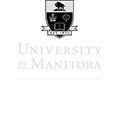
PRESENTERS
FABRICATING TRUTH
PALLAVI SWARANJALI, Carleton University
Forging Architecture: The Contronymic Nature of Architectural Creation in the work of
STEVEN BEITES, Laurentian University
KATIE GRAHAM, Carleton University
Architectural Storytelling in Virtual Reality: How VR Can Expand on Architectural Perception
TED LANDRUM, University of Manitoba
Poetry as Research: Fabricating Architectural Truth
FABRICATING IN SITU
SCOTT GERALD SHALL, Lawrence Technological University
Borrowed Intelligence: Leveraging Industrial Fabrication To Evolve Building Production
NAHID AHMADI, Carleton University
Asphalt Deserts: Rethinking the Architecture of Surface Parking Lots
DIETMAR STRAUB, University of Manitoba
A Beautiful Waste of Time: Operating a Snow Academy
JENNIFER SMITH, Auburn University
INCREMENTAL: Resilience through Disaster-Relief Housing
BRYAN HE, University of Manitoba
Making of the Hakka Vernacular
SOCIAL FABRICS
VALENTINA DAVILA, McGill University
Down the Back Stairs: Servants’ Spaces in Montreal’s Square Mile
LAWRENCE BIRD, Winnipeg
ELLEN GRIMES, School of the Art Institute of Chicago
History's Future Fabrics: New Models for Historic Ecologies
NIKOLE BOUCHARD, University of Wisconsin
RYAN STEC, Carleton University
Making Public Space: Examining Walter Lippmann & John Dewey’s pragmatism as a
constructive expansion to the spatial theory of public space
Public space is a modern fabrication. It emerges from spatial theory crafted in the mid- twentieth century as a tool to defend open and shared spaces in the modern
city. The term public space made its most significant early appearances in Hannah Arendt’s The Human Condition (1958) and quietly in Jane Jacobs’ The Death and
Life of Great American Cities (1961). These two eloquent and enduring arguments for the value of the common world helped define the many spatial theories of loss
that have come since then, most of them organized around the idea (or ideal) of public space and the great loss of the city as it once (never really) was. By the
accounts of the city in most of these theories, public space is on its last legs. It has been erased, suppressed, sub-contracted, sold off, fenced off, filled in and built
upon. While it is true that the common space of the city is always in transformation, this presentation offers a theoretical proposition, which sees this
transformation as a constructive strength. As a counterpoint to the theoretical roots of public space (particularly in Anglo-European and American spatial theory) I
propose a constructive addition to theories of public space grounded in the pragmatic writings of Walter Lippmann’s The Phantom Public (1925) and John Dewey’s
The Public and its Problems (1927). Dewey and Lippmann drew attention to problem of politics centered on the role of the ‘informed citizen’, given the complexity of
the globalized world, suggesting a more tangible understanding of how specific publics are formed around emerging issues. In this presentation, I will examine
particular cases of temporary art and design interventions (into the common spaces of the city) through the pragmatic theory of Dewey and Lippmann, to offer a more
constructive dimension to our understanding of the common spaces of the city and our existing theories of public space.
MEDIATING FABRICS
LANCELOT COAR, University of Manitoba
Lignes d’erre: Tracing the History and Future of Force Flow in Structures
FEDERICO GARCIA LAMMERS & JESSICA GARCIA FRITZ, South Dakota State University
Master Building Complex Forms in the Absence of Graphics
JOE KALTURNYK, Winnipeg
The Temporary and the Intermediate: Strategies for a Better Dinner
photo: Landon Lucyk [M2 Architecture]

The 2018 Atmosphere Symposium is co-chaired by: Lisa Landrum and Liane Veness with the support of the Faculty's Cultural Events Committee and the Centre for Architectural Structure and Technology (C.A.S.T.); web design and graphics support by Tali Budman (ED4 Architecture student), and administrative support from Brandy O’Reilly (Faculty of Architecture, Partners Program).
Questions? Please contact info@atmos.ca